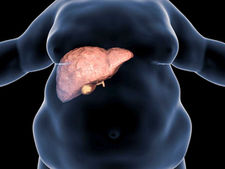top of page

Coronary Artery Bypass Surgery
What is Coronary Artery Bypass Surgery?
Coronary artery bypass surgery can be briefly described as bypassing (bridging) away from the stenosis/obstruction area in the coronary arteries with vessels taken from other parts of your body. It will be more understandable if we describe the logic of the surgery as follows. Imagine a five-lane highway with heavy traffic, all four lanes are closed due to an avalanche falling from the mountain next to it, and the last lane, where all traffic flows, is at risk because the avalanche is slowly advancing. In such a situation, one of the things highway officials will do is to enable traffic to bypass (bridge) the avalanche area by opening an alternative side road extending from before to after the avalanche area. Similarly, we plan to ensure that blood reaches the parts of your heart that cannot receive enough blood by performing bypasses away from the stenosis/obstruction area in the coronary arteries.
What are the Expected Benefits of Coronary Artery Bypass Surgery?
The purpose of coronary artery bypass surgery is to increase the insufficient blood flow caused by narrowed or blocked coronary arteries by means of new bypass vessels. In this way, it is planned to extend the lifespan of patients, eliminate complaints such as chest pain and shortness of breath caused by the heart, increase their exercise capacity and prevent new heart attacks that may occur.
How is Coronary Artery Bypass Surgery Performed?
In Coronary Artery Bypass Surgeries with the Traditional Approach: The patient is taken to the operating room and connected to monitors, where vital signs are monitored instantly. The patient's identity information is checked and the surgery plan documents are reviewed. The specialist doctor and technicians of the anesthesia department open the patient's vascular access, insert the arterial catheter (via the arteries in the wrists or groin) to monitor your blood pressure instantly during and after the surgery, administer general anesthesia drugs (put him to sleep), connect him to the respirator, provide blood products, fluids and He transfers the patient to the surgical team by inserting the central venous catheters (via the veins on both sides of the neck or in the groin), which allow drug treatments to be administered. The areas to be operated on of the patient with a urinary catheter are cleaned with antiseptic solutions and covered with sterile covers. Then, the patient's sternum (bone of faith) is cut and the chest cavity is entered. The vessels to be used for bridging are prepared. The most commonly used veins are: Internal mammerian artery (arteries of the anterior chest wall located on both sides of the breastbone), great saphenous veins (veins extending under the skin from the ankle to the groin in both legs), radial arteries (located in both forearms and extending from the elbows). arteries extending towards the thumbs). The surgeon opens the chest cage with the help of a retractor and reaches the chest cavity. Then, it reaches the heart by opening the pericardial sac in which the heart is located. To prevent clot formation during the surgery, the patient is given heparin (blood thinning medication) and is connected to a cardiopulmonary bypass machine (heart-lung machine). The body begins to cool to protect important tissues and organs. The vital functions of the patient, whose lungs and heart are stopped during the surgery, are continued thanks to this machine. After stopping the heart with special cardioplegic solutions, bypass anastomoses are performed for narrowed or blocked coronary arteries (one end of the vessel to be bridged with very thin stitches is sewn beyond the stenosis in the coronary artery, and the other end is sewn to the aorta). This part of the surgery can be called the bridging phase. In patients whose intraoperative evaluation reveals dense plaque in the aorta, the main artery leaving the heart, the surgeon may decide to perform the bridging phase of the surgery without stopping the heart (on-pump heart) and sometimes without connecting the patient to the cardiopulmonary bypass machine (off-pump). Following the completion of the bridging phase, the heart and lungs are restarted, the patient is disconnected from the heart-lung machine, and protamine (a drug that reverses the effects of the previously administered blood thinner called heparin) is administered. Following bleeding control, chest tubes are placed in the opened chest cavities and the surgery area. Thanks to these chest tubes, leakage-like bleeding and fluid accumulation that may occur in the early postoperative period are removed before they accumulate inside and prevent the lungs from collapsing. In patients who are thought to have heart rhythm problems in the early post-operative period, one or two battery wires can be attached to the heart as a precaution to be used if necessary. The sternum is wired. Subcutaneous tissues and skin are closed. Following the surgery, the patient is taken to intensive care while asleep and on a respirator. In the intensive care unit, vital signs, blood oxygenation measurements, amount of bleeding from chest tubes, urine output, etc. parameters be close
FOR INFORMATION AND APPOINTMENT, YOU CAN LEAVE YOUR NUMBER OR ASK OUR EXPERTS
YOU CAN LEAVE YOUR NUMBER FOR INFORMATION AND APPOINTMENT AND ASK QUESTIONS TO OUR EXPERTS

bottom of page


-04.png)
-06.png)
-05.png)
-08.png)
-07.png)























